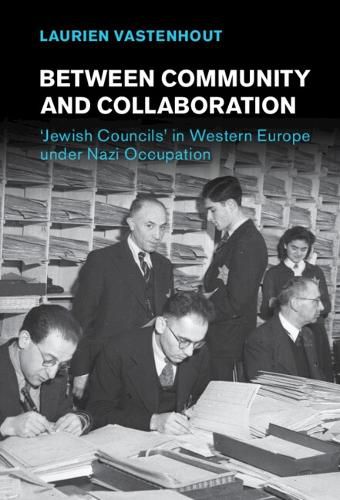Readings Newsletter
Become a Readings Member to make your shopping experience even easier.
Sign in or sign up for free!
You’re not far away from qualifying for FREE standard shipping within Australia
You’ve qualified for FREE standard shipping within Australia
The cart is loading…






The first comprehensive, comparative study of the ‘Jewish Councils’ in the Netherlands, Belgium and France during Nazi rule. In the postwar period, there was extensive focus on these organisations’ controversial role as facilitators of the Holocaust. They were seen as instruments of Nazi oppression, aiding the process of isolating and deporting the Jews they were ostensibly representing. As a result, they have chiefly been remembered as forms of collaboration. Using a wide range of sources including personal testimonies, diaries, administrative documents and trial records, Laurien Vastenhout demonstrates that the nature of the Nazi regime, and its outlook on these bodies, was far more complex. She sets the conduct of the Councils’ leaders in their prewar and wartime social and situational contexts and provides a thorough understanding of their personal contacts with the Germans and clandestine organisations. Between Community and Collaboration reveals what German intentions with these organisations were during the course of the occupation, and allows for a deeper understanding of the different ways in which the Holocaust unfolded in each of these countries.
$9.00 standard shipping within Australia
FREE standard shipping within Australia for orders over $100.00
Express & International shipping calculated at checkout
The first comprehensive, comparative study of the ‘Jewish Councils’ in the Netherlands, Belgium and France during Nazi rule. In the postwar period, there was extensive focus on these organisations’ controversial role as facilitators of the Holocaust. They were seen as instruments of Nazi oppression, aiding the process of isolating and deporting the Jews they were ostensibly representing. As a result, they have chiefly been remembered as forms of collaboration. Using a wide range of sources including personal testimonies, diaries, administrative documents and trial records, Laurien Vastenhout demonstrates that the nature of the Nazi regime, and its outlook on these bodies, was far more complex. She sets the conduct of the Councils’ leaders in their prewar and wartime social and situational contexts and provides a thorough understanding of their personal contacts with the Germans and clandestine organisations. Between Community and Collaboration reveals what German intentions with these organisations were during the course of the occupation, and allows for a deeper understanding of the different ways in which the Holocaust unfolded in each of these countries.